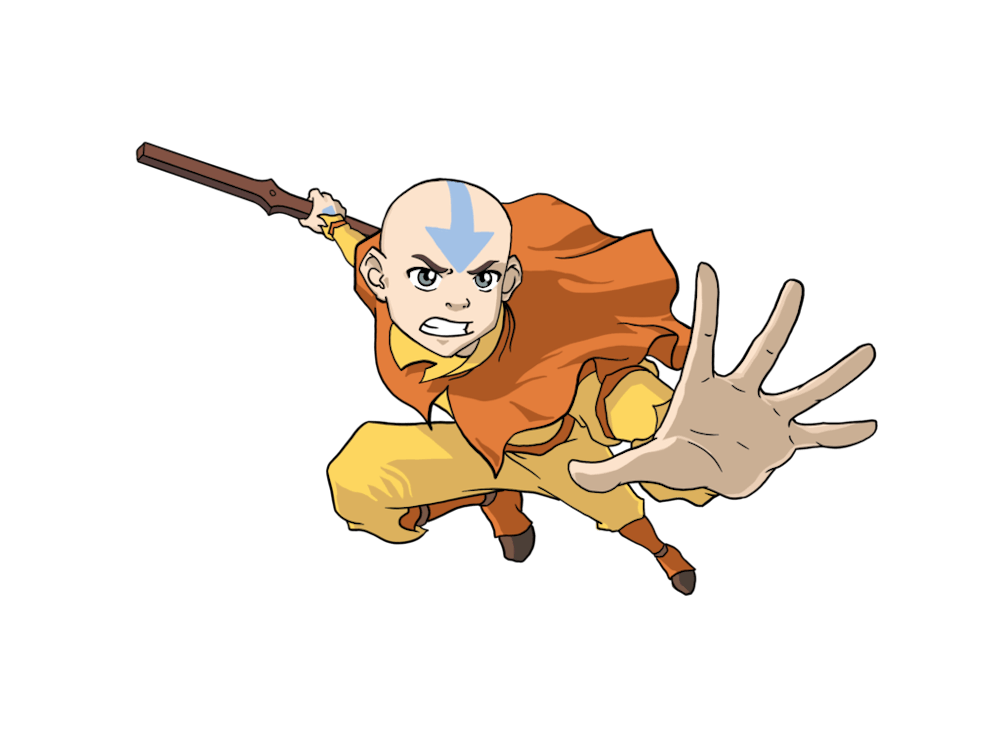Nostalgia is a fickle sentiment to come to terms with. As a nineteen–year–old girl, I am constantly grappling with the dichotomy of wanting to grow out of my teenagerish tendencies, yet still retain any remnants of my childhood. And, the truth is, I barely remember much of this childhood at all. Perhaps this is a side effect of aging in the face of social media— many of my fondest memories are not colored by reading Harry Potter under my comforter, but by watching countless YouTube skits past my bedtime. The constant consumption of content from an early age has prevented much of this content from taking up substantial space in my past.
The memory that will remain permanent in my archive, however, is of watching the two–hour finale of Avatar: the Last Airbender on Nickelodeon thirteen summers ago. I had not even entered double digits yet, but the show's perfect storytelling, accompanied by elements of fantasy, likeable–yet–flawed characters and a well–constructed storyline resulted in a crystallized ending for me.
ATLA became synonymous with how I wanted to remember my childhood—happy, yet, meaningful.
The premise is simple: a group of young teenagers are tasked with the responsibility of restoring balance to their world. The protagonist, Aang, is a twelve–year–old boy who disappeared before a warring nation committed genocide against his own. The show balances on the precipice of good versus evil, and explores how these two concepts are not inherently opposite, but rather forked pathways in the same road. Siblings are bred to hate one another, school children are taught to believe there is beauty in national supremacy, and entire cities are built on the effects of government propaganda. Each of the show’s heavier themes are offset by childlike humor and adventures unique to each episode, with the characters given the ability to bend the elements—earth, air, water, and fire—at their will.
This past May, ATLA was added back to the Netflix catalog after several years, and quickly claimed the website's number one spot for most viewed. Despite having seen the show in its entirety over a dozen times, I was ecstatic at the thought of my friends revisiting a story I never really let go of. There were so many plot devices to discuss, scenes to dissect, and characters to dispute over. For a cartoon advertised as a children’s show, I was eager to see its execution come forward to an audience old enough to recognize its heavier elements and incredible world–building.
But something I should have taken into account is perhaps what is the basis of all art itself— that is, the consumer’s experience with it. Some of my friends were not going to watch the show’s three seasons over a handful of days and internalize it in the same way as someone who had spoonfed themselves its content whenever they wanted to feel like a child again.
I could not claim my experience with ATLA as matter–of–fact, as the ideal finished product in an instruction manual for how to watch the show. So when my friend started watching ATLA for the first time ever and complained to me about how she did not like one of the main characters, Katara, I struggled with understanding how something so well–rounded to me contained rough spots.
To adjust my understanding of the show was to adjust how I raised myself off its contents and life lessons; the way my peers adopted other fictions as gospel. I worshiped Katara and many of the other female characters on the show because of their headstrong portrayals coupled with a sensitive emotional complex. The seven–year–old version of myself did not think in any way that she was flawed in her actions the way characters are supposed to be, and my reluctance to let that childlike version dissipate meant choosing to ignore alternate perceptions of the show.
The act of gatekeeping is not unique to television, but has been discussed in all forms of art on an everyday level. To pick and choose how one believes a project should be viewed and engaged with is something we do on a subconscious level, such as when one scoffs at a Tinder match’s messages about discovering Rex Orange County years after “Loving Is Easy” came out. I was envious of my friend for watching this show and experiencing its betrayals, battles, and banter with fresh eyes— an envy that turned into distaste for her failure to appreciate it as much as I did. But just as I have been trying to stop falling into the grooves of what is familiar—to feel something warm again in the age of lifestyle vlogs and instant gratification—I learned to stop letting my attachment to what is familiar compromise my attachments to others.
ATLA has given me a lot more than three seasons and a medium on which I can project all of my insecurities about growing up. It submerged me into the effects of a fully–developed narrative, effects which continue to linger in my studies of what makes a story surpass the threshold of entertaining into memorable. And when my friend finished the two–hour series finale last weekend, it gave us questions to tear down together: why do we choose to cling to certain narratives, songs, and movies over others? What media does she use to define her life's stages by?
By the time the last scene of the show came on, we both found ourselves crying— her, for getting to witness a perfect ending to her new favorite series, and me for finally departing from the burden of wringing it out for all of its remaining sentimentality. And although I still haven't found the next story to invest pieces of myself into, I believe I have found the right people to invest my own stories into, a balance I am ready to embrace when I turn twenty.

